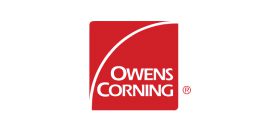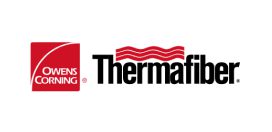The health and safety of building materials are a priority for commercial building owners and occupants—including insulation. In terms of insulation safety and health properties, not all types of insulation are equal.
Duct Cleanliness
The best way to make sure an HVAC system can provide efficient, quiet air delivery and occupant comfort is by following a regular maintenance schedule and implementing a high-efficiency filtration system. Improperly maintained HVAC systems can lead to an accumulation of dirt, dust and moisture which can restrict air flow and jeopardize indoor air quality.
Fiberglass air duct insulations are designed to withstand the rigors of proper cleaning—with surfaces that are resistant to damage. In partnership with the National Air Duct Cleaners Association (NADCA) and the U.S. Environmental Protection Agency (EPA), NAIMA has developed guidelines for recommended duct cleaning, including: contact vacuuming, power brushing, remediation, building code-compliant sealant, and the avoidance of any damaging sanitizers and biocides. Learn more about cleaning fibrous glass or lined sheet metal ducts here.
Mold
For years, fibrous glass materials have been incorrectly cited for contributing to mold growth. The fact is, mold can grow in any environment where there’s moisture and food for mold spores, so many organic materials can be food for mold. Fiberglass insulation and spray foam insulation are both inorganic, and therefore don’t feed mold growth. Furthermore, testing in accordance with UL1 and ASTM2 standards confirm that fiberglass insulation does not support mold growth.
Even though some products claim to be mold-resistant, mold can grow on ANY surface under moist conditions if organic material exists to support the spores. In order to prevent microbial growth, moisture must be controlled.
Get More Facts HereHealth Impacts
Not all insulation materials have undergone the same level of testing and scrutiny when it comes to health and safety.
- Fiberglass insulation
Fiberglass insulation is the most thoroughly tested insulation material available. The International Agency for Research on Cancer (IARC), the US National Toxicology Program (NTP) and the California Office of Environmental Health Hazard and Assessment have all stated that fiberglass and mineral wool thermal and acoustic insulations are not considered classifiable as carcinogens.
- Spray foam insulation
The National Institute for Occupational Safety and Health (NIOSH) has issued a warning on Diisocyanate exposure entitled, “Preventing Asthma and Death from Diisocyanate Exposure.” The safety of spray foam insulation is still being evaluated. According to the California Department of Toxic Substance Control, one of the main ingredients in spray foam, methylene diphenyl diisocyanate, could pose a number of health risks, including lung damage and asthma.
See More
–+Different spray foam manufacturers publish different guidelines for length of evacuation times during installation and curing. Note that there are no established evacuation timelines from any government agency.











